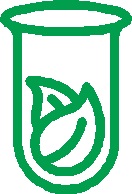 What is Science? - February 13, 2013 Jeff Schalau, Agent, Agriculture & Natural Resources University of Arizona Cooperative Extension, Yavapai County In my work with the University of Arizona Cooperative Extension, my stock-in-trade is science-based information. Considering that for a moment, I’m not sure we all have the same idea of what actually constitutes science. This week, I thought it would be worthwhile to discuss how scientific knowledge is generated and validated. The Scientific Method is the best-known way to discover “how the world works”, without being biased by religious, political, or philosophical values. This method provides a means to formulate questions about general observations which elicit theories of explanation. The approach lends itself to answering questions in fair and unbiased statements using a hypothetical form that can be tested. Three important ideas inform the scientific method. The hypothesis is a statement made by a researcher that is a working assumption to be tested and proven. A theory consists of general principles drawn from facts that explain observations and can be used to predict new events. An example would be Newton’s theory of gravitation. The falsifiable/null hypothesis must be able to be tested, and either accepted or rejected. Scientists make hypotheses that they want to disprove in order that they may prove the working assumption describing the observed phenomena. This is done by declaring the statement or hypothesis as falsifiable (logically capable of being proven false). So, we would state the above hypothesis as “the earth is not round” making it a working statement to be disproved. The scientific follows a number of sequential steps designed to create an explainable outcome that increases our knowledge base. This process is as follows: first, make an observation - gather and assimilate information about a phenomenon or process. Second, define the problem – ask questions about the observations that are relevant and testable using a null hypothesis to provide unbiased results. Third, form a hypothesis – create an explanation, or educated guess, for the observation that is testable and falsifiable. Fourth, devise and perform an experiment to test the hypothesis. Fifth, derive a theory based on the outcome of the experiment that explains the observation and predicts the likelihood of future observations (using statistical analysis). Sixth, scientific works are published in peer-reviewed journals where they must withstand the scrutiny of other scientists. These journal articles describe the methods and materials used so that others can validate or build upon previous research. To provide a real-life example, let’s look at an example from my Master’s Degree research. My null hypothesis was: nitrogen and phosphorus fertilizers will not have an effect on photosynthesis, root growth, or outplanting survival of Douglas-fir seedlings. I grew the seedlings in nursery production containers using a standard nutrient solution having all essential plant nutrients until they had three to five leaves. Then, I randomly assigned them to one of nine treatments. Standard levels of nitrogen and phosphorus were determined from existing scientific literature. Nitrogen and phosphorus were each applied at one-third normal, normal, and three times normal creating nine different treatments (low N + low P, low N + normal P, low N + high P, normal N + low P, normal N + normal P, normal N + high P, high N + low P, high N + normal P, and high N + high P). All other nutrients were provided at the standard rate. I grew twenty five trees each using the nine nutrient solutions for about ten months in a greenhouse. I conducted my experiments on these year-old trees. Here are some of the results: increasing nitrogen increased top growth, leaf area and photosynthesis; high phosphorus treatments showed increased root growth after planting. All trees survived after outplanting but grew at different rates. There were many other trends/findings, but I think the most interesting was the theory that forest seedling nurseries could apply differing nutrient solutions to seedlings based on planting site characteristics that would improve their performance after planting. For example, a low N + high P fertilized seedling might be better suited a hotter/drier site because it would grow more roots than it would stem and leaves. Fewer leaves means decreased water demand and increased long-term survival on hotter/drier sites or so my theory goes. I hope this helps readers understand the scientific method and its rigor. Some questions are more difficult to design unbiased experiments because of the difficulty in minimizing environmental variation. However, when I refer to science-based information, it has been derived from unbiased, objective experimentation and has been reviewed by a panel of scientific peers prior to publication. I have also included a link below to the University of Nevada Extension Publication The Scientific Method, from which I paraphrased some of the above information. Follow the Backyard Gardener on Twitter – use the link on the BYG website. If you have other gardening questions, call the Master Gardener help line in the Camp Verde office at 928-554-8999 Ext. 3 or e-mail us at cottonwoodmg@yahoo.com and be sure to include your name, address and phone number. Find past Backyard Gardener columns or provide feedback at the Backyard Gardener web site: http://cals.arizona.edu/yavapai/anr/hort/byg/. The Scientific Method, University of Nevada Cooperative Extension http://www.unce.unr.edu/publications/files/cd/2002/fs0266.pdf |